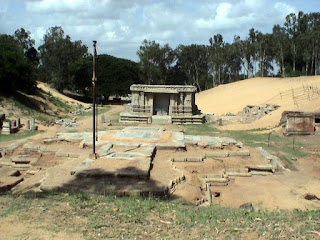Besides being the perfect conduit between Kerala’s most interesting places and home to its famous backwaters, Kottayam is a region rich in history and culture. No wonder it is one of Kerala’s most alluring destinations for travellers.
1. Enjoy some religious sightseeing
Kottayam is speckled with centuries-old churches, temples, and mosques. The most notable amongst these are two churches known as Valiyapalli and Cheriyapalli, near Kottayam town. Built in the 16th century, these churches are distinct in character. While Valiyapalli has rare antique carvings, murals and West Asian architecture, Cheriyapalli depicts Biblical themes but also features temple architecture. On the banks of the river Meenachil, you’ll find the Thazhathangady Juma Masjid. This mosque is over 1000 years old and is richly embellished by carvings and murals. Two important temples dedicated to Lord Shiva are the Vaikom Temple and Thirunakkara Shiva Temple. Besides their traditional architecture, these temples also attract people for their festival celebrations which are unique and moving.
 |
| church in Kottayam |
2. See the backwaters
One of Kottayam’s most precious offerings is Kumarakom. Home of the backwaters, this area is famous for its serene cruises, divine landscapes and greenery. The Kumarakom Bird Sanctuary and Pathiramanal Island are true delights for bird-watching enthusiasts as they attract migratory birds from as far away as Siberia and the Himalayas. Here you can also find countless reliable centres that will treat you with a relaxing Ayurvedic massage, a delightful way of starting your day.
 |
| Backwaters in Kottayam |
3. Take a road trip
From languid backwaters to the majestic Western Ghats, Kottayam is a region which offers stunning natural beauty in a variety of forms. To experience Kottayam’s glory at its mesmerising best, rent a car. A drive on the stretch connecting Kottayam to the Periyar Sanctuary offers you Kottayam’s finest and most untouched landscapes. You’ll find yourself embraced by sky-high palm trees and plantations, convincing you that you’re in an artist’s masterpiece.
4. Visit the cave temple
Ayyappara is a cave-like temple, which is revered by people as a place of enormous historical and religious importance. This mythological place is believed to have sheltered the Pandavas during their exile and it attracts thousands of believers from far and wide, all year round. Located 2000 feet above sea level, Ayyappara is also popular amongst tourists for its splendid sunsets.
 |
| Caves in Kottayam |
5. Get close to wildlife
An eternal favourite amongst travellers is the Periyar Wildlife Sanctuary, located a couple of hours from Kottayam. This expansive sanctuary is the home of many enchanting animals. Here, herds of elephants are often seen strolling by, and creatures including exotic birds, bison and wild boar are found. A cruise takes you along the divinely beautiful Periyar River as it bisects the sanctuary’s majestic mountains. A heavenly way of taking in the sights is by bamboo rafts, and camps can be set for the outdoorsy travellers. Owing to its idyllic beauty, it has long been a favourite amongst both amateur and accomplished photographers.
 |
| Wildlife of Kottayam |
6. Trek through ‘God’s own country’
Love walking? Wagamon and Peermed are the ultimate hiking destinations in Kottayam. While Peermed is a popular hill station perched at an altitude of 1066 meters, Wagamon is 60 kms from Kottayam and offers delightful landscapes that can be scaled with ease.
 |
| Trekking Kottayam |
7. Feast with a local family
Like most other parts of India, Kerala has its unique cuisine. The truly authentic way of experiencing the real local flavours is by staying with a friendly Kerala family in a Kottayam homestay. They will serve dishes from recipes perfected over time by past generations. The best part is, if you are lucky, you will be served vegetables that you helped pick or seafood that you caught with your own hands.
 |
| Feast in Kottayam |
8. Marvel at the toddy tappers
Toddy is Kerala’s potent and locally produced alcohol. It has a very unique taste and is the perfect accompaniment to an authentic, local meal. The drink’s basic ingredient is actually collected by firm-footed men who effortlessly climb up towering trees and tap them. The process is as dangerous as it looks and very unique to the state. These nimble toddy tappers have become increasingly hard to find in the recent years, but with some inside information from your Kerala homestay host you should discover where to find them.
 |
| Toddy - Farmer |
9. Join the festivities of Changanassery
During the festival of Deepam, people flock in large numbers to the beautiful town of Changanassery. The festival of lamps, named after the town’s old moniker ‘Town of five fire lamps’, is celebrated here every year between November and December. It’s less than 25 kms from Kottayam and also famous for the Thrikkodithanam temple, which is embellished with intriguing 18th century inscriptions.
 |
| Festival Kottayam |













































